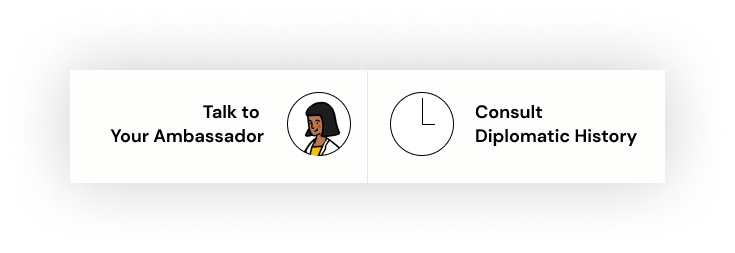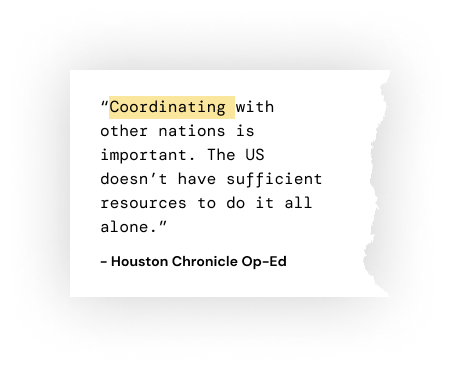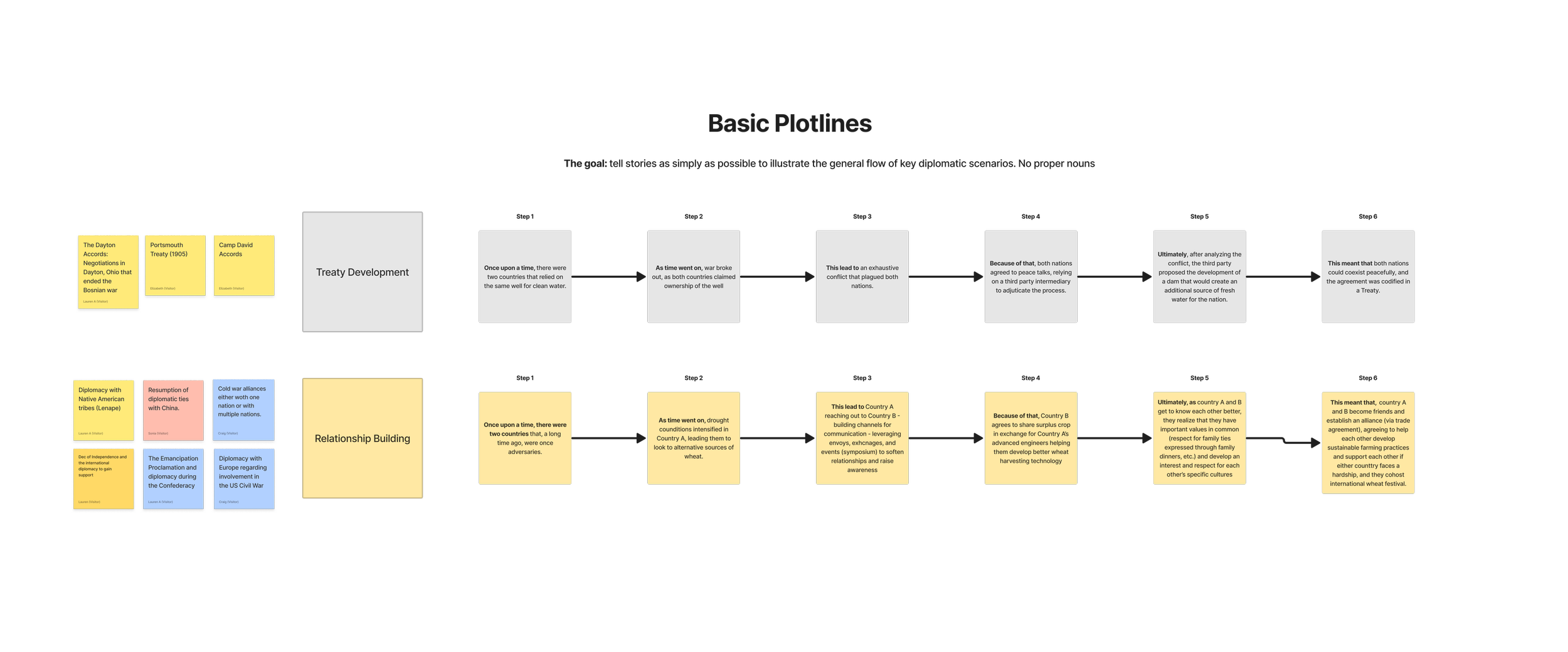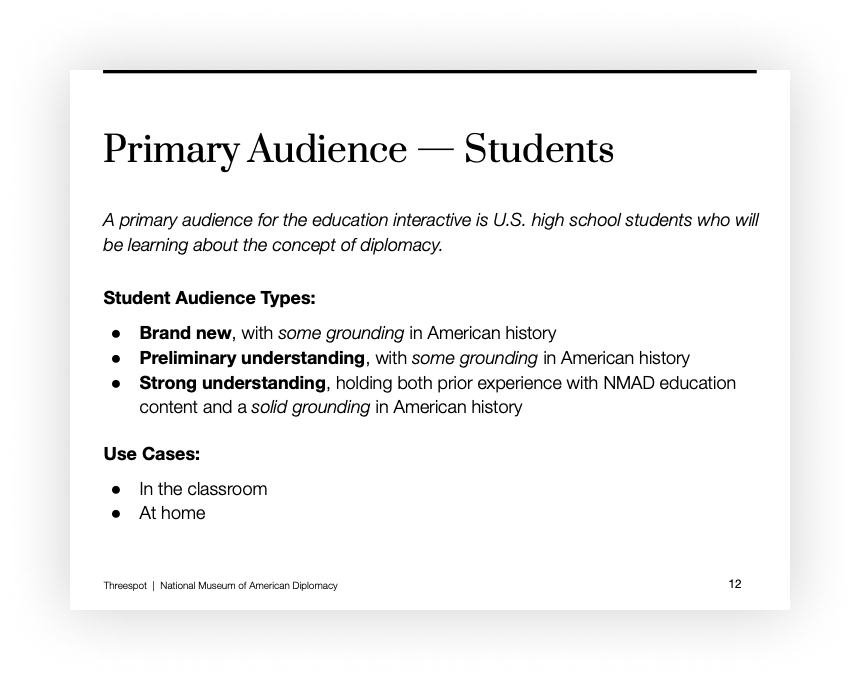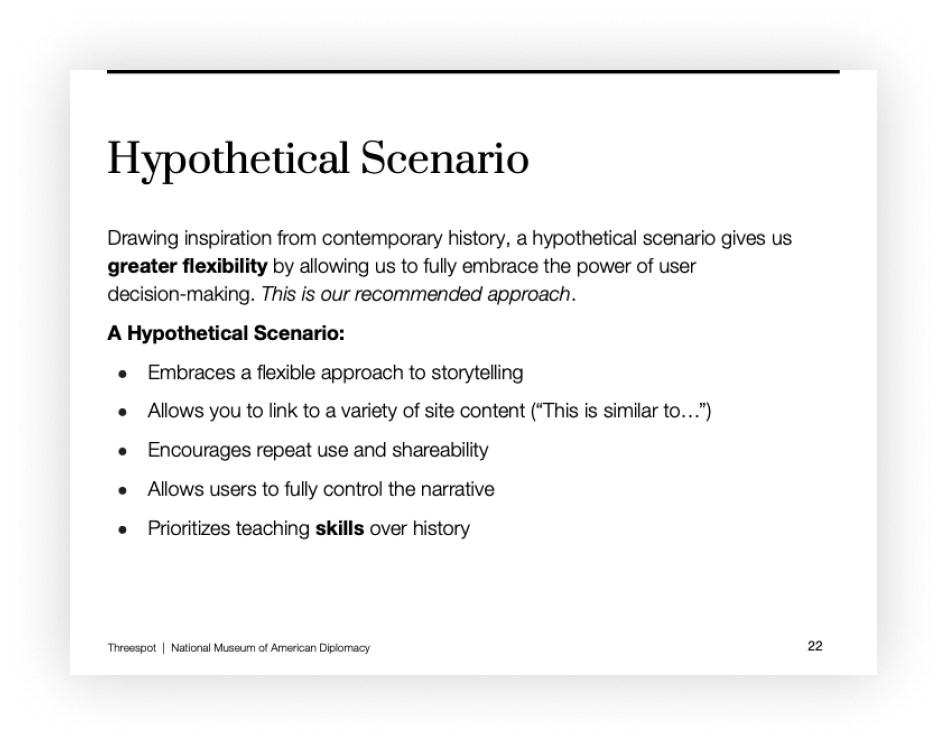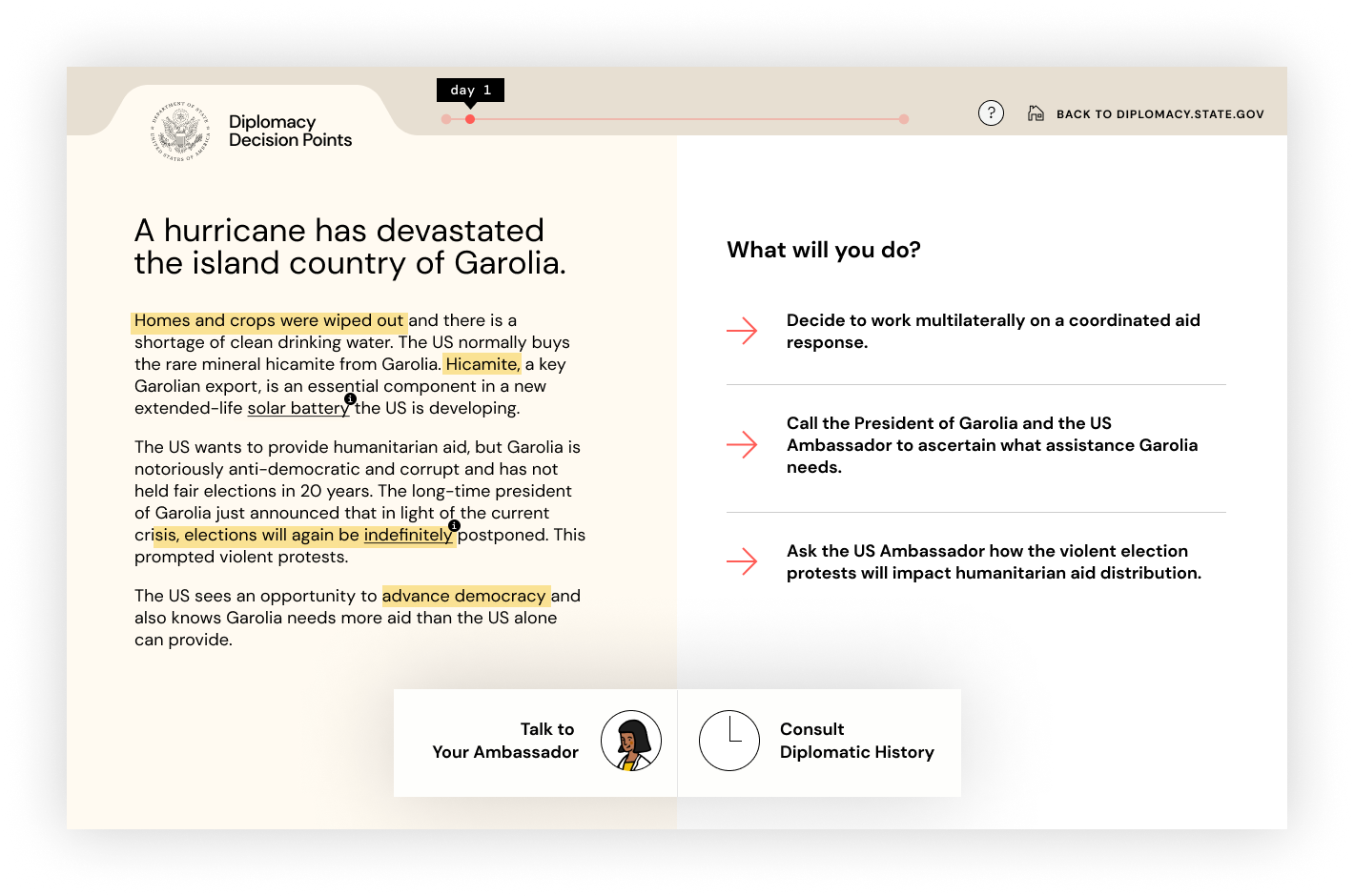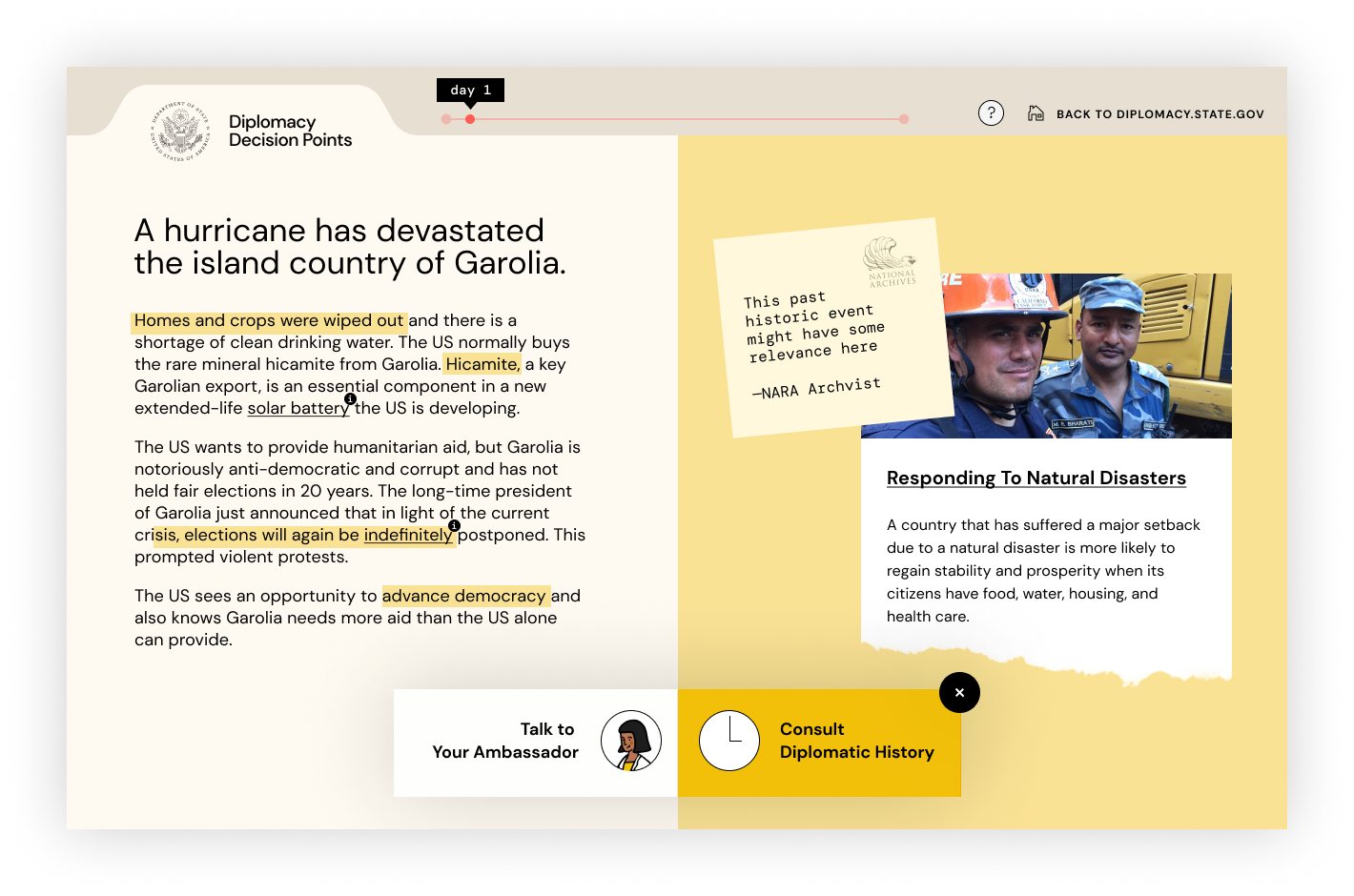Off the heels of a successful website redesign, the National Museum of American Diplomacy contracted Threespot to help develop a new way to engage students through their education program.
Diplomacy Decision Points
Through our initial brainstorm, we developed the idea of a “choose your own adventure” game that would allow students to test their own diplomatic mettle as they respond to different situations. After workshopping our concept with middle school educators in the DMV area, we developed a set of constraints:
The experience should last 5-7 minutes so that teachers would have enough time for setup, technical support, and other lessons.
It should be hypothetical, not historical, to ensure that most History and Government teachers could connect the experience to relevant subject matter.
By codifying our recommendations and vision in a Product Vision Brief, we established that the experience - titled Diplomacy Decision Points - would place users in the role of the secretary of state amidst a fictional humanitarian crisis.
Building On A Background
Middle schoolers, a famously attentive group, would need to feel engaged while working through this interactive. To help more directly reach these students, I developed a flow based on a simple tagging system that corresponds to different diplomatic frameworks.
In the experience, users would choose from different ways to proceed, each of which corresponded to one of the three categories of skills. As users made their decisions, the narrative would change, forcing them to reckon with the consequences of their actions. The narrative would branch and intersect, but ultimately end at 1 of 3 possible conclusions based on which skillset you used the most. This pop-psychology style approach would be the vehicle for the experience, allowing users to feel “seen” by the experience (or to take it again if they don’t like their results).
Click to enlarge as needed.
Creating a Feeling of “Depth”
Adding Support and User Rescue Features
Knowing that users may feel unclear or unequipped to move forward in the experience with just their instincts, I wanted to develop a suite of features that could help users find hints and clues while broadening the educational value of that tool.
To that end, I developed the “Talk to Your Ambassador” and the “Consult Diplomatic History” features.
“Talk to Your Ambassador” allowed us, as the game designers, to write "in-the-moment" clues and suggestions specific to each scenario a user would be responding to. This added a sense of perspective to the world and the user’s actions, as your advisor could react based on your previous decisions.
“Consult Diplomatic History” allowed us to connect the experience to historical content from the National Museum of American Diplomacy website, drawing in related real-world events as reference materials.
You can test your diplomatic skills here.
Client: National Museum of American Diplomacy
This was created during my time at Threespot.
About the Project
Thank you to:
Lizzy Cederberg, Producer
Spence Nelson, Visual Designer
Nora Chovanec, Creative Director
Ted Whitehead, Developer
David Yearwood




